Taking the bus to your place in the sun
May 26, 2010
Beachgoers, L.A. County would like to take you for a ride.
Whether you’re heading from Warner Center to Will Rogers State Beach or from City Terrace to the Santa Monica Pier, there’s a bus to take you to the ocean this summer.
The first of the buses start running on Memorial Day weekend, although most will begin service in mid- to late-June.
The cost ranges from free (Playa Vista/Marina del Rey/Venice Beach shuttle) to 50 cents (for a one-way trip on the Topanga Canyon beach bus) to $6 (a roundtrip ride from the Antelope Valley to Santa Monica.) Riders under 12 must be accompanied by an adult.
The first bus out of the gate this summer will be the free Beach Shuttle that runs from Playa Vista to Marina del Rey and Venice Beach, which will operate on Fridays, weekends, and holidays between Memorial Day Weekend and Labor Day. Its first day of operation is this Friday, May 28. The shuttle bus, which runs on environmentally-friendly compressed natural gas, also will stop at Burton Chace Park’s summer concerts on select Thursday nights. (Those seeking another fun, alternative mode of transportation this summer can also check out the WaterBus, which charges $1 each way to transport patrons to the Marina del Rey summer concert series.)
Also getting off to an early start is the Antelope Valley Summer Beach Bus, which begins service on Memorial Day, May 31. After that, it will run on Tuesdays, Thursdays, Saturdays and on Labor Day.
The Topanga Canyon Summer Beach Bus starts operating June 21, and will operate Monday through Saturday through Sept. 6. It runs from Warner Center (convenient to the Orange Line) with two stops in the Valley and four in Topanga Canyon before delivering patrons to three choice waterfront destinations: Topanga State Beach, Will Rogers State Beach and Santa Monica State Beach.
The county also offers beach-bound summer buses from Altadena, Charter Oak/Duarte, East Los Angeles, La Crescenta/ La Canada Flintridge and Castaic/West Ranch.
And just because they call them beach buses doesn’t mean passengers have to hit the sand.
Catrina Love, a senior marketing analyst at the county Department of Beaches and Harbors, notes that the shuttles provide transportation for all sorts of summer plans.
“The shuttle means that you don’t always have to take your car just to get around,” Love says. “You can always get off along the route for other activities.”
Posted 5/26/10
At LACMA, a new gallery stirs to life
May 26, 2010
The fences are coming down and the invitations are going out—clear signs that a new era in the “transformation” of the Los Angeles County Museum of Art is just months away.
Workers can now be seen putting the final touches on the new Lynda and Stewart Resnick Exhibition Pavilion, a striking 45,000 square-foot gallery by Italian architect Renzo Piano, who also designed the neighboring Broad Contemporary Art Museum.
Meanwhile, 3,000 elaborate invitations featuring a small, silvery Venetian mask with feathers began arriving this week for a gala fundraiser on September 25 to celebrate the Resnick gallery’s “unmasking.”
Guests, who’ll pay from $2,500 a ticket to $100,000 per table to help fund LACMA’s special exhibitions, will be the first to tour the building and its three inaugural exhibits, which include highlights from the Resnicks’ collection and displays of ancient Mexican sculpture and European fashion from 1700 to 1915.
The gallery is scheduled to open to the general public on October 2.
The new gallery was built thanks to a $45 million gift made by the Resnicks in 2008.
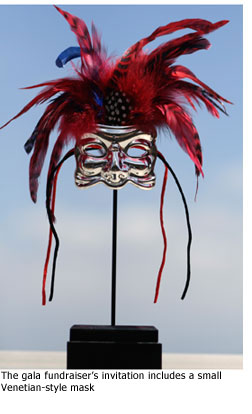 Stewart Resnick is CEO of the Roll Corporation, an L.A.-based holding company that owns extensive tree farms and companies that include Teleflora, Fiji Water and POM Wonderful. Lynda Resnick, the marketing guru behind POM’s iconic curvy bottles, has served as a LACMA trustee since 1992. She designed and donated the unusual invitations for the gallery that carries her name.
Stewart Resnick is CEO of the Roll Corporation, an L.A.-based holding company that owns extensive tree farms and companies that include Teleflora, Fiji Water and POM Wonderful. Lynda Resnick, the marketing guru behind POM’s iconic curvy bottles, has served as a LACMA trustee since 1992. She designed and donated the unusual invitations for the gallery that carries her name.
Initially, the Resnicks were going to donate $25 million for a new grand entrance to LACMA. But when the oil company, BP, offered to fund the entrance, the Resnicks said they’d donate nearly twice as much for construction of the new exhibition hall. The couple also pledged to donate $10 million for art.
The architect, Piano, designed the expansive one-story gallery as a complement to his earlier LACMA work directly to the south, the three-story Broad, which opened in 2008.
The similarities between the two buildings are obvious—travertine-clad walls topped by a skylight-covered roof topped with iconic “fins.” Taken together, the two buildings help create a more unified look on a campus where, until now, each building has differed dramatically from its neighbors.
“You can start to see with the Resnick Pavilion almost complete that the idea was not really to make a building but to make a place,” Piano told a sold-out audience at a “director’s series” conversation with LACMA Director Michael Govan in late April.
The exteriors of both buildings also contain dramatic accents of “Renzo Red,” a signature bright scarlet that the Italian favors. At the Broad, he uses red for the exterior stair cases and escalators. At the Resnick, he uses it on the heating and air conditioning systems, which are visible on the building’s exterior, only recently coming into full view when fencing was removed.
With those fences down, visitors also can now see more of artist Robert Irwin’s “Palm Garden,” the last stage of which is near the Resnick Pavilion. Irwin, who also designed the Getty Center’s garden, began his work at LACMA in 2008 with landscape architect Paul Comstock. Some of the palms are planted in rows, while others are set individually in oxidized steel planters. Between them are lush green lawns.
Already, the garden is exerting a strong pull on visitors.
“It’s such an inviting space,” Eryn Talevich, who was leading a toddler art class at LACMA on a recent Sunday, noted admiringly. “It makes you want to lie down and enjoy the sun.”
For an early review by Los Angeles Times architecture critic Christopher Hawthorne, click here.
Posted 5/26/10
Gunmen confront “lucky” health workers
May 26, 2010
The two L.A. County mental health workers felt confident there was little potential for violence lurking inside the Gardena apartment where they’d been dispatched to evaluate a man who, according to his mother, was “acting bizarre.”
As always, before even arriving, they’d assessed the risks.
“Does the patient know we’re coming?” they asked the mom, who had called the Department of Mental Health’s crisis line. “Has he been hospitalized before? Does he get violent? Has he hurt anyone today? Is he suicidal? Homicidal?”
The answers to these questions and others convinced them that, while the man was manic and “hyper religious,” he probably was not dangerous.
What Jimmey Loya and Shawn Kim could not have foreseen at that moment was that the real danger was bearing down on them from the outside and that their bipolar patient would, strangely enough, be the one to save the day.
On Tuesday, Loya and Kim, who are members of one of the county’s Psychiatric Mobile Response Teams, were praised by the Board of Supervisors for their professionalism and cool headedness during a harrowing, March 29 home-invasion robbery by three gunmen. Supervisor Mark Ridley-Thomas, in whose district the events occurred, called the mental health workers heroic.
Both men, who’ve been employed by the county for less than a year, say the incident illustrates the unpredictable and largely invisible nature of their work. Not a day goes by, they say, that they don’t feel lucky to be alive.
Loya and Kim say they arrived in Gardena at about 6 p.m. Loya, 34, is a registered nurse. Kim, 29, is a psychiatric social worker. As part of a multi-disciplinary team, it’s their job to determine whether patients require immediate hospitalization or should be referred to outpatient services. With each call, the teams enter a universe of uncertainties.
In this case, the pair had been dispatched to a second-floor apartment in an industrial area of Gardena with a reputation for gang activity. When the door opened, the patient said simply: “Come on in. Let’s get this over with.” Arrayed behind him was his support system—his mom, dad, uncle and aunt. 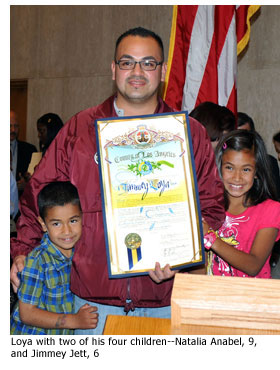
Loya and Kim quickly sized-up the place, looking again for dangers and ways to make their visit safer. They made sure, for example, that all the lights were on. They looked for weapons and kept the front door wide open so that they’d have a fast escape should something go wrong. They then all took a seat around a dining room table, except for the aunt, who stood behind her nephew.
Loya and Kim soon concluded that the patient did not meet the criteria for involuntary hospitalization. He was denying any homicidal or suicidal thoughts. He was not hallucinating. He was loud but not hostile. He was polite and approachable—although that behavior was about to dramatically change.
As the mental health workers were providing the patient with a referral to Harbor/UCLA medical center, three men brandishing handguns burst into the apartment through the open front door.
“Nobody move!” they shouted. “Take everything out of your pockets and place it on the table!”
“I can’t believe this is happening,” the aunt exclaimed. “Is this for real?”
Kim, for his part, was praying that their patient would remain calm and not escalate the situation. “Of course, that didn’t end up happening,” he says.
Instead, the patient suddenly shouted: “How dare you come in here with two officers in my house!” Kim and Loya say their hearts sank. They now feared that the gunmen might kill them in a mistaken belief they were cops. “We’re definitely dead,” Kim thought to himself. “No way we’re going to get out of this anymore.”
The gunmen moved more menacingly toward the mental health workers. “I could feel the gun on the back of my head,” Loya says. “I could feel the barrel. I knew I was going to die.” Loya says he thought about his four young children, the oldest of them 9. But he says he knew that, with a mom who’s a nurse practioner and a sizable life insurance policy to collect, “they were going to be OK. I accepted death.”
The patient was in a different state of mind. He jumped up out of his chair, ripped off his shirt and ran straight toward the armed invaders, screaming, “Kill me! Kill me! Kill me!” The gunmen, startled, headed for the door and then down the stairs, chased by the muscular patient.
“When our client got up, I thought we were doomed. But it caught them by surprise,” Kim says of the robbers. “They didn’t expect anything like that. It didn’t seem they were ready to kill anybody. We were very fortunate.”
When the patient strode back into the apartment, he shouted: “That’s the power of God! If I would have died today, I would have gone to heaven.” He then looked at the county workers and said, “Do you think I have a problem now with my anger?”
“On the contrary,” Loya says he responded. “you’re my hero.”
Loya and Kim say that, as you might expect, their bosses in the Department of Mental Health have been especially attuned to potential psychological trauma they may have suffered from the incident, in which no arrests have been made. Both say they returned to work quickly and are doing well.
Loya says that one thing he does differently these days when entering an unfamiliar home is to keep his hand on his BlackBerry with 911 already punched in and ready to send. He says he also has a new response when people ask how he’s doing: “I feel good. And I’m alive.”
Posted 5/26/10
A lifeline for independence 5/20/10
May 21, 2010
A lifeline for independence 5/20/10
May 21, 2010

Faced with the prospect of serious cuts to social services in the California budget, the L.A. County Department of Public Social Services has produced two videos showing the crucial role of one endangered program—In-Home Supportive Services, which helps seniors and others with disabling conditions avoid institutionalization.
There’s a new website in town
May 21, 2010
“Nerph” probably won’t like the Sheriff’s Department’s new website, but law abiding county residents probably will.
The convicted spray-paint vandal, a.k.a. Jose Miranda, gets prominent play as one of “L.A.’s Most Wanted Taggers,” a new element of the department’s retooled site, which was launched this week. Click here to see it.
The new look combines big photos with crime-blotter press releases, crime statistics and consumer-driven services to better link county residents with the department.
“Our mission is to give the public what it wants in the way the public wants it,” says Capt. Mike Parker, the site’s project leader.
The web makeover was ordered last year by Sheriff Lee Baca. “He said let’s design this in a way that’s engaging and visual,” says Parker.
Parker says that other law enforcement sites provided no model for the design or content. So he and his team opted for a look more akin to news media websites, both to entice the public and organize information. Most of the news stories in the Headlines and Top Stories section are departmental press releases that link to numerous TV and newspaper stories. A Google widget provides quick translation into over 50 languages.
The new site also aims to provide the public with a better understanding of the department’s activities and tell stories that the traditional media may ignore. Says Parker: “We get to tell our story now.”
Posted 5/13/10
Last chance to register for primary vote
May 20, 2010
The deadline to register to vote in the June 8 statewide primary election is Monday, May 24. The county’s Registrar-Recorder announced that its office at 12400 Imperial Highway in Norwalk will stay open till midnight Monday to receive new registration forms. Would-be voters also can get online registration forms at www.lavote.net or by calling the Voter Registration Request Line at (800) 481-VOTE (8683.) Those who are unsure whether they’ve registered can check their status online at www.lavote.net or by calling the Registrar-Recorder’s office at (562) 466-1323.
Creating a new voice for the Valley
May 20, 2010
The San Fernando Valley is coming together, with the proposed creation of a new coalition that would amplify the region’s voice and increase its clout.
The Board of Supervisors is scheduled to vote next week on a motion to ratify creation of a new multi-jurisdictional agency called the San Fernando Valley Council of Governments, or COG. The new entity aims to create a greater sense of regional political identity and to foster cooperation among the various governments that serve the area’s 2 million residents.
The motion by Supervisors Zev Yaroslavsky and Michael D. Antonovich would unite four Valley cities—Glendale, Burbank, San Fernando and Los Angeles—plus nearby Santa Clarita and county unincorporated areas under one umbrella. Other Valley cities are welcome in the future.
Representatives from each city plus the two supervisorial districts that represent the Valley would meet to focus attention on regional issues such as transportation, education and economic development. Participation is voluntary, and all decisions would have to be unanimous.
“We think it will bring the region together to speak with one voice,” says Mitch Englander, chief of staff for Los Angeles City Councilman Greig Smith.
Participants hope to use the COG to raise the region’s profile in Sacramento. Banding together makes it easier to launch studies about issues of regional interest and may improve chances of securing state and federal grants by eliminating competition between neighbors.
Similar agencies already exist nearby in the Las Virgenes-Malibu area, the Westside and the San Gabriel Valley.
The effort to “increase the Valley’s autonomy and self-determination” sprouted from the failed Valley secession movement of 2002, says Robert Scott, director of the Mulholland Institute at the Valley Economic Alliance, who spearheaded the drive. “The Valley has not been first on a lot of people’s list,” says Scott. “Now it can be.”
Posted 5-20-2010
The Ford cooks up a Baked Potato jazz fest
May 20, 2010
 Since 1970, The Baked Potato has been one of the L.A. jazz scene’s best-kept secrets. Tucked away in a cozy little corner of Studio City, the club was founded by keyboard virtuoso and composer-arranger Don Randi as a place for his musician friends to hang out and woodshed in between session gigs and tours.
Since 1970, The Baked Potato has been one of the L.A. jazz scene’s best-kept secrets. Tucked away in a cozy little corner of Studio City, the club was founded by keyboard virtuoso and composer-arranger Don Randi as a place for his musician friends to hang out and woodshed in between session gigs and tours.
Now owned and operated by Don’s son Justin Randi, the Baked Potato celebrates 40 years of making music with a very special event: The Baked Potato’s 40th Anniversary Jazz Festival, taking place Saturday, May 22 and Sunday, May 23 at the County’s John Anson Ford Amphitheater.
The lineup is the A-list of the jazz elite, including Larry Carlton, the Yellowjackets, The Jazz Ministry, Steve Lukather and Special Friends, The Michael Landau Group, Don Randi & Quest, Lee Ritenour and Friends, and many others.
The Ford Amphitheater is located at 2580 Cahuenga Boulevard East in Hollywood. Tickets are on sale now at The Baked Potato website , in limited quantities through the Ford Box Office at (323) 461-3673 or online by clicking on the buy tickets button.
The Ford throws open the doors at 1 p.m. and the show kicks off at 2 p.m. and runs to 11 p.m. After that, you might want to head across the Vine Street freeway bridge for a late meal and a nightcap at the Baked Potato itself, 3787 Cahuenga Boulevard West.
Posted 5-20-10





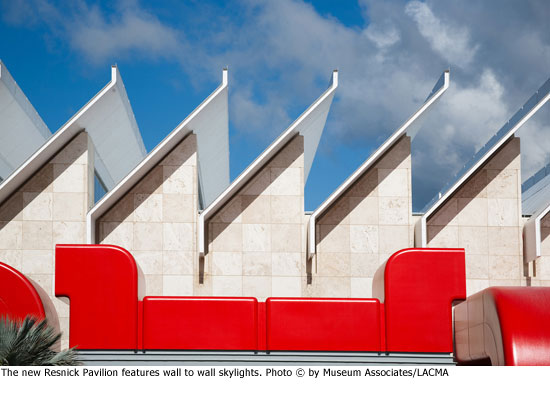
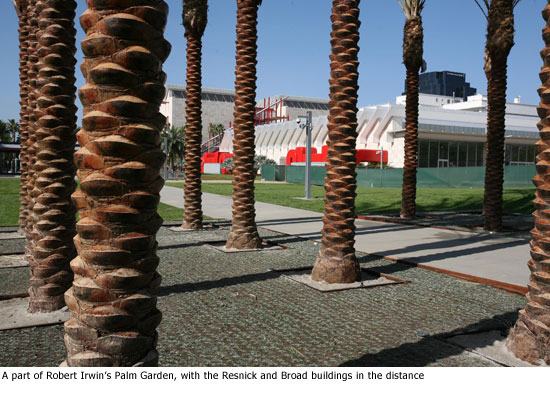
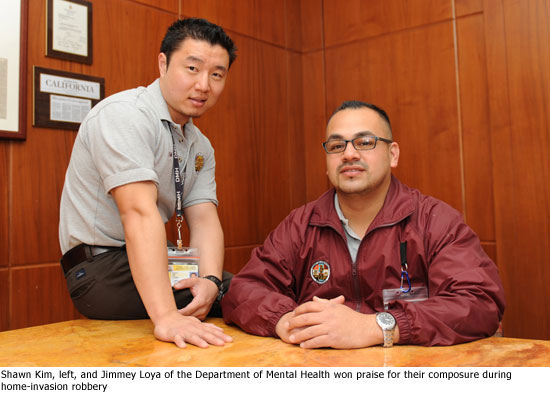
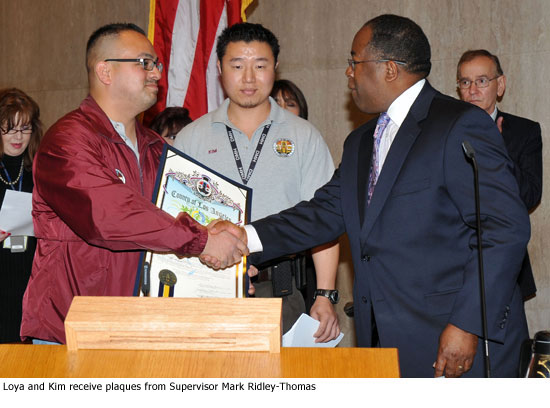

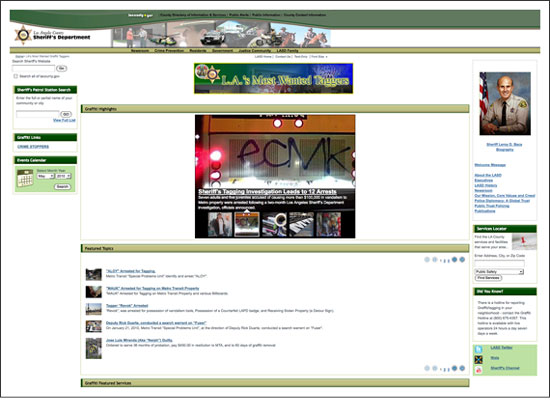
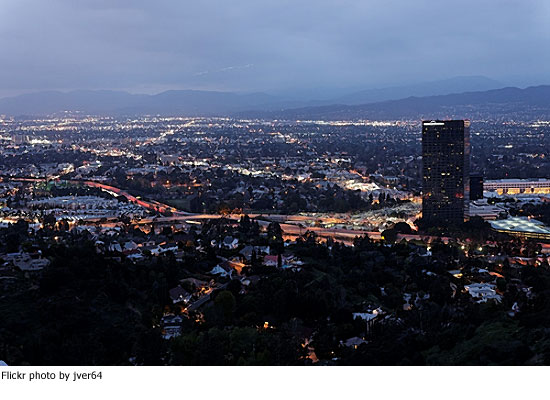





 Check for the latest closure information
Check for the latest closure information








